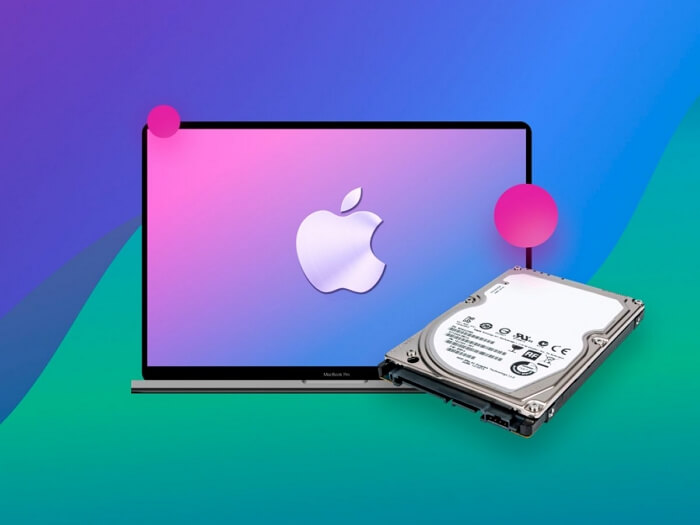Formatted Recovery Mac: How to Recover Data from Formatted Mac Hard Drive
Can You Recover Data from a Formatted Hard Drive on Mac?

We always experienced the fresh new feeling we get after formatting the Mac drive. It has several advantages, including increased storage space, fighting against any of the online troubles you've been facing, and cleaning up junk files. It also increases the speed of our mac, making it work more efficiently. Losing certain parts of data while trying to format a Mac hard drive is something that is inevitable. It may sometimes seem horrifying as it deletes the complete data from your hard drive. Despite losing the data due to format, you still have a chance to recover all your important data. It is because all the files would be waiting for new data to come and occupy all the empty space during formatting.
There are several effective methods through which you can recover all the data from formatted Mac hard drives. In this article, I will tell you an easy way to recover data from a formatted mac hard drive without putting in much effort. It is recommended to recover your data as soon as you format it to prevent any kind of data loss.
What Should You Do and Not Do After Formatting A Hard Drive on Mac?
Here are some of the important things you need to look after to take full advantage of formatting a hard drive on a Mac.
Do's
- Ensure to take care of your hard drive regularly by preventing new data from writing to the drive since formatting the hard drive deletes all the crucial data at once. Doing this enhances your system and increases the data recovery chances. This is the first thing for you to do.
- A high-stand data recovery tool is certainly a game-changer. So, be wise while choosing your data recovery tool. Don't go for any crack tools that don't last long.
- Make sure to check all the data before you start formatting the hard drive. It helps you better understand the formatting process and do better next time.
Don'ts
- Stop doing anything on your hard drive once formatted in case of data overwriting. It could also be the other common problem in data recovery.
- Don't choose a formatted hard drive for the data recovery. Instead, it is better if you go with external or other devices.
How to Efficiently Recover a Formatted Mac Hard Drive
Data recovery can sometimes be a hectic task, especially if you are a beginner. As mentioned above, choosing the right data recovery software can be a crucial part of the data formatting process. If you are not aware of any of the data recovery software, then Deep Data Recovery for Mac is there to help you. It is a well-known data recovery software for mac that does versatile recovery work such as formatting data recovery, deleted files recovery, partition recovery, undo empty trash and other data losses.
Here is why you need to choose it:
- It is a professional data recovery software with long-time domination in the data recovery field. Their experience is incredible.
- They have about a 99.7% success rate in data recovery that not only limits to formatted files but also other data losses.
- Qiling accepts a wide variety of file types, including images, documents, audio, documents to archives. So, you can recover any type of file with ease.
- Qiling works on versatile devices including Mac HDD, SSD, USB drive, SD/CF card, digital camera memory card, DJI drones, dash cams, etc.
- Qiling is a widely used and trustworthy software. It has an easy-to-use format for quick understanding.
- Qiling offers you various special features on its software like precision search, pausing the scanning process, and filtering the search results as per your convenience.
It takes three steps to recover data from a formatted hard drive on Mac:
Step 1. Correctly connect your external hard drive to your Mac. Launch Deep Data Recovery for Mac, choose file types and click "Next" to start.

Step 2. Select the external disk and click "Scan" to let the software search lost files on it.

Step 3. After a quick scan and deep scan, all files will be presented in the left panel in the scan results.

Step 4. Select files you want to recover and click the "Recover" button. Don't save the recoverable files to the external hard drive in case of data overwriting.
* Note that the success rate of SSD primarily depends on whether the trim is on or off. Due to the Trim technology, it can be difficult for any data recovery program to fully recover lost, deleted, or formatted data on it.
Tips to Prevent Unintentional Data Loss On Mac (External) Hard Drive
- Prevent overheating, keeping it close to liquids, not cleaning the system and other things that could damage your hard drive.
- Be careful before you delete your files. The files that don't have an option to store in the Trash bin can be hard to manually restore.
- Make sure that you have a steady power supply. An unstable power supply can lead to several other issues other than data loss.
- Try to update the anti-virus software regularly to prevent data loss.
- Back up your files regularly in time. This could save you a lot of time and effort in the future.
Following all the above best practices can help you prevent data loss. Try to do it regularly to avoid inconvenience. Make sure to visit Qiling's official website if you are looking forward to buying data recovery software.
Related Articles
- Proven Ways | Recover Deleted Time Machine Backup
- No.1 Recuva for Mac Free Download
- How to Recover a Replaced File on Mac
- 5 Easy Ways to Retrieve Your Suddenly Disappeared Files on Mac